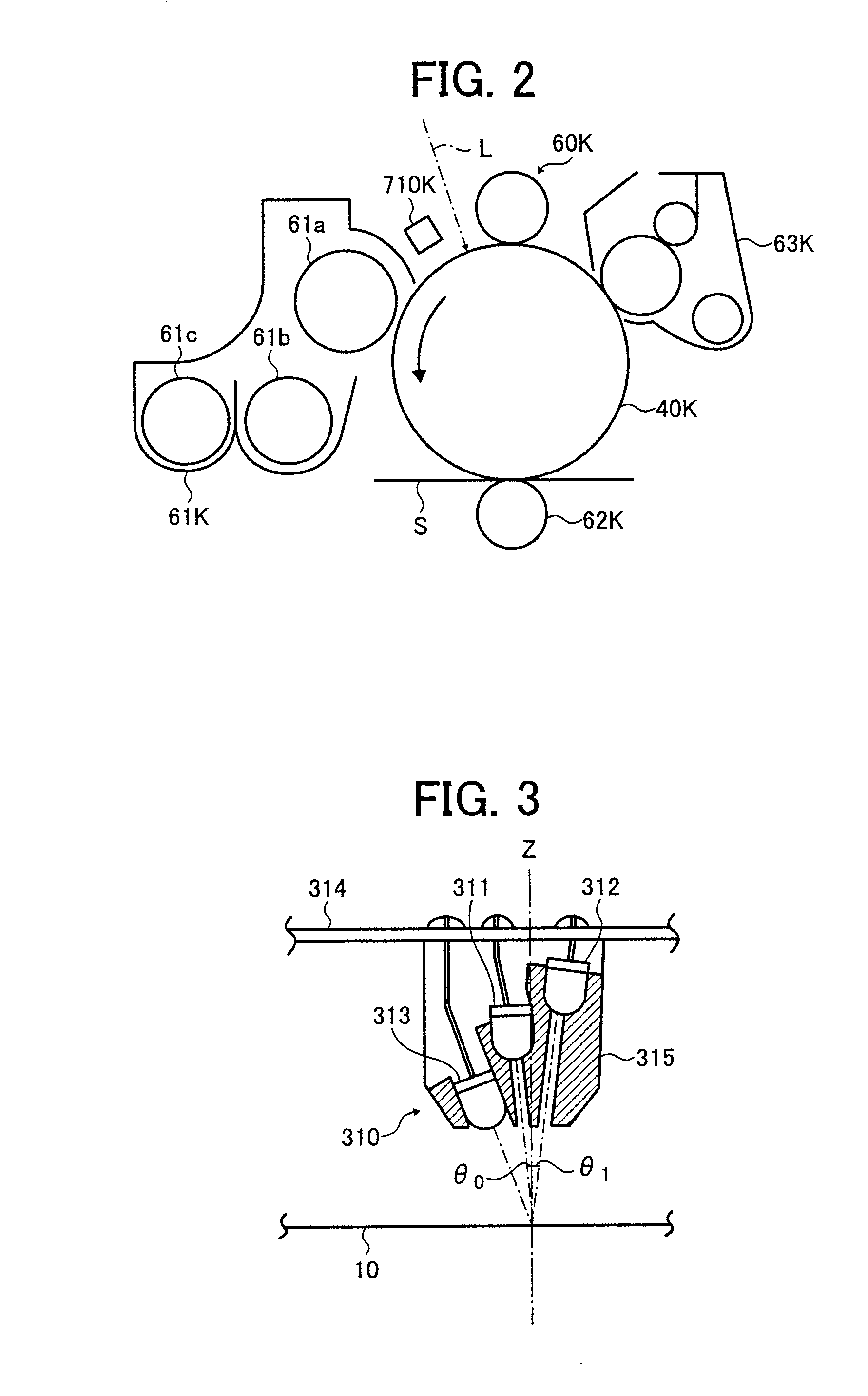Image forming apparatus capable of efficient toner concentration control
a technology of toner concentration control and image forming apparatus, which is applied in the direction of electrographic process apparatus, instruments, optics, etc., can solve the problems of sensor not being able to accurately detect the amount of toner adhesive, the output value of the receiving device is declining, and the light reflection decreases
- Summary
- Abstract
- Description
- Claims
- Application Information
AI Technical Summary
Benefits of technology
Problems solved by technology
Method used
Image
Examples
experiment-1
[0196][Experiment-1]
[0197]The experiment-1 is an example experiment to form gradation pattern of each toner patch by uniformly distributing the LD on-duty of the exposure device 21 under the image potential of charge / development bias.
[0198]FIG. 14 is a graph representing potentials at exposure portion of each toner patch in the experiment. FIG. 15 is a graph representing a relation of the LD on-duty, and the ratio of the regular-reflection light output (ΔVsp_reg) and the diffuse-reflection light output (ΔVsp_dif) to calculate sensitivity correction coefficient α from the detection value of each toner patch detected by the light sensor. As shown in FIG. 15, data points around the minimum value of the ratio of the regular-reflection light output (ΔVsp_reg) and diffuse-reflection light output (ΔVsp_dif) are not overlapped but are distributed uniformly.
[0199]FIG. 16 is a graph plotted with the data points obtained from each toner patch in the effective range to calculate the sensitivity...
experiment-2
[0201][Experiment-2]
[0202]The experiment-2 is an example experiment to form gradation pattern of each toner patch by employing a fixed LD on-duty, and making a charge bias and a development bias variable. Specifically, the experiment-2 is the example experiment when the exposure device 21 is a multiple-value-writing system.
[0203]FIG. 17 is an illustration of outline graph representing surface potentials of the photoreceptor. As shown in FIG. 17, since exposure potentials are constant value, the charge-DC-bias and the development-DC-bias are changed to change the development potentials such that the toner adhesive amount of each toner patch is made different.
[0204]The toner adhesive amount of each toner patch formed in this procedure becomes similar adhesive amount to the adhesive amount of the experiment-1. As a result, the result can be shown in FIGS. 15 and 16 similarly. The data points that are necessary to calculate the sensitivity correction coefficients α and η are not overlap...
PUM
 Login to View More
Login to View More Abstract
Description
Claims
Application Information
 Login to View More
Login to View More - R&D
- Intellectual Property
- Life Sciences
- Materials
- Tech Scout
- Unparalleled Data Quality
- Higher Quality Content
- 60% Fewer Hallucinations
Browse by: Latest US Patents, China's latest patents, Technical Efficacy Thesaurus, Application Domain, Technology Topic, Popular Technical Reports.
© 2025 PatSnap. All rights reserved.Legal|Privacy policy|Modern Slavery Act Transparency Statement|Sitemap|About US| Contact US: help@patsnap.com



